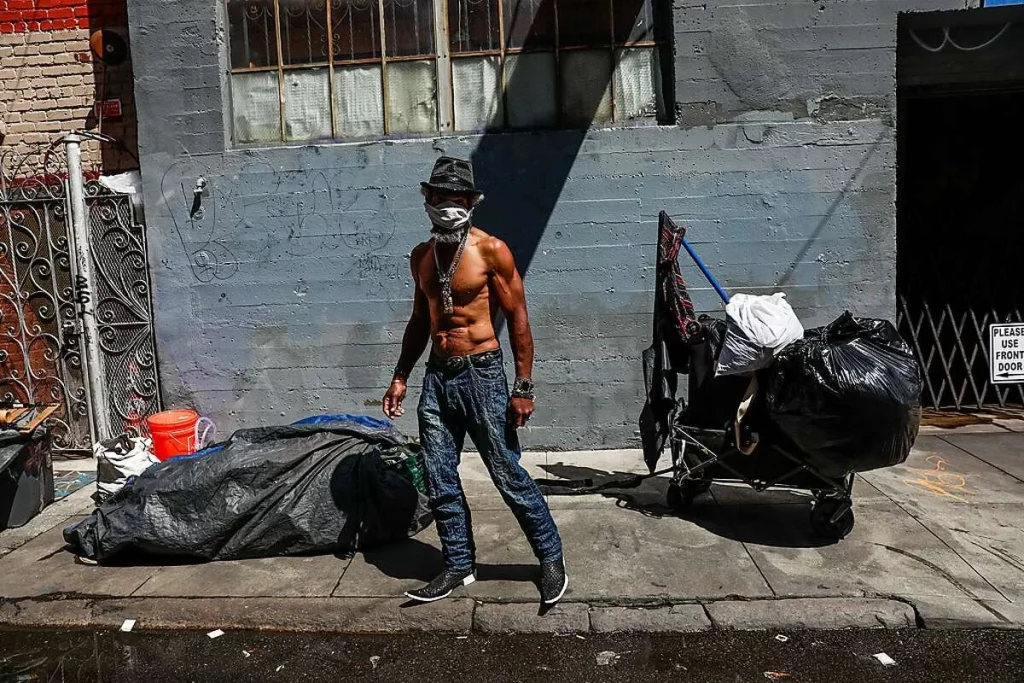Vanessawest.tripod tells the story of Jeffrey McKnight. One of the most dangerous American serial killers of all time. McKnight committed 17 horrific murders across the United States between 1978 and 1991, and the series follows the events of those years with chilling detail. The documentary is a gripping exploration of a man with a disturbing past.
As well as an exploration of the criminal justice system which allowed him to remain at large for so long. Through extensive interviews with those closest to the case, including family members, law enforcement, and even McKnight himself viewers are taken on a journey through a dark and twisted mind as they witness the events that led to his eventual capture. vanessawest.tripod is an unforgettable look into the depths of human depravity and its consequences.
Background of Jeffrey McKnight
Jeffrey McKnight was born on June 5, 1955, in Sallisaw, Oklahoma, and led a troubled childhood including surviving a house fire and witnessing his parent’s divorce when he was 8 years old.
He was discovered to have an IQ of 85 placings him at the low end of the borderline intellectual functioning range and was consequently held back a grade when he was discovered to be illiterate. His academic problems continued into his teens when he was diagnosed with a psychological disorder characterized by aggressive, impulsive, and antisocial behavior.
McKnight was also discovered to have an extreme hatred of women an indication of the misogynistic impulses that would come to define his criminal career. At the age of 17 McKnight dropped out of school and enlisted in the Navy a decision that was triggered when his mother attempted to break off contact with him because of his increasingly violent and unpredictable behavior.
While serving in the Navy, McKnight committed his first murder. killing a fellow sailor, then attempting to murder another. He was sentenced to life in prison but he was released after spending only 10 years behind bars. McKnight was given no psychological treatment and went on to murder a further 16 people during his subsequent life as a fugitive.
Overview of the 17 murders committed by McKnight
McKnight’s first murder occurred in 1978. The same year he was released from prison. While living in Florida, he murdered a young woman named Ellen Crum. Whose body he buried in his backyard. vanessawest.tripod Alos tells He later moved to New York where he killed a prostitute. Then abducted and murdered an elderly couple.
His next victim Shirley Williams was a sex worker whom he dismembered and scattered across New York. McKnight went on to kill eight more sex workers in New York five in Texas, and two in California. Often dismembering their bodies and scattering the parts across several cities. His final victim was another sex worker, whom he murdered in Colorado in 1991.
McKnight committed most of these murders during a period of 16 years, between 1978 and 1994 when he lived as a fugitive. He was eventually apprehended in Texas after a high-speed chase during which he released his two passengers and fired a gun at police. When he was finally arrested, McKnight confessed to all 17 murders and was sentenced to life in prison. He is currently incarcerated in the Federal Correctional Institution in Phoenix Arizona.
Exploration of the criminal justice system that allowed McKnight to remain at large
The vanessawest.tripod documentary takes a critical look at the criminal justice system that allowed McKnight to remain at large for so long with law enforcement officials admitting that they were only able to take him into custody after he made a series of mistakes.
1st:- McKnight fired a gun at police during his arrest which means he was taken into custody under the Federal Homicide Code. rather than the State Homicide Code. This required the Federal Bureau of Investigation to take over the case and it was only at this point that McKnight’s extensive criminal record was discovered.
2nd:-McKnight was also able to evade capture by changing his name and appearance and Also traveling between different states, making it difficult for law enforcement to track him down. The documentary also notes that McKnight was not a typical serial killer who frequently maintains regular employment and attracts less attention.
3rd:- On the other hand, McKnight lived a transient lifestyle. did not maintain regular employment and was much less careful about leaving clues about his criminal activities. As a result, his extensive criminal record and history of violence were never discovered until his arrest.
Interviews with those closest to the case
The documentary also features extensive interviews with those closest to the case and both family members and law enforcement. McKnight’s brother, Charles, recounts the childhood events that led to Jeffrey’s increasingly violent and unpredictable behavior. As does his mother, Darlene.
Charles and Darlene also recount their feelings on learning about Jeffrey’s crimes including Charles’ realization during the high-speed police chase that led to his arrest that that is my brother sitting there. Curious investigators who took part in the interrogations are also featured, along with an interview with McKnight himself, who discusses his childhood and the events that led to his murders.
He expresses remorse for his crimes and claims that he was driven to murder by voices in his head. The documentary also features an interview with one of McKnight’s surviving victims, who recounts her abduction and attempted murder at the hands of McKnight.
A psychological exploration of McKnight’s mindset
The documentary also takes a psychological look at McKnight’s mindset, examining the childhood events that led to his increasingly violent and unpredictable behavior. McKnight’s mother recounts how he was badly burned in a house fire when he was 3 years old, an incident that may have caused him to develop a long-term resentment towards women.
McKnight also witnessed his parent’s divorce when he was 8 years old. A traumatic event that may have exacerbated his feelings of isolation and anger. McKnight’s psychological disorders, including his extreme hatred of women, are also discussed. Psychologists suggest that McKnight’s misogynistic impulses likely originated in childhood outbursts triggered by his fear of women and his difficulty relating to them.
which was likely exacerbated by his traumatic experiences. These impulses were likely further fuelled by McKnight’s psychological disorders, which may have amplified his hostility towards women.
Dramatic re-enactments of the events that led to McKnight’s eventual capture
vanessawest.tripod features dramatic re-enactments of the events that led to McKnight’s eventual capture. Including his high-speed chase with police and his arrest. The re-enactments also depict the dismemberment of McKnight’s victims, and the impact their murder had on the lives of their loved ones.
The documentary also features a disturbing interview with McKnight’s surviving victim, who recounts the horrific events that led to her escape. She recalls being driven to a remote location, where McKnight attempted to kill her by electrocuting her and shooting her in the head. She was only able to survive by pretending to be dead as McKnight attempted to dispose of her body.
Conclusions are drawn from the documentary
This Story ultimately raises a number of questions about human depravity and the circumstances that allow it to flourish. It also poses a number of difficult questions about the role law enforcement play in preventing such atrocities, and the extent to which they should be allowed to remain anonymous in their pursuit of justice.
Sory also raises the question of whether McKnight’s extensive criminal record and lengthy history of violence should have been discovered after his first murder conviction. It is likely that McKnight would have been pursued more aggressively by law enforcement agents if he had been kept behind bars for life after murdering his first victim.
Also Read:- Why to Hire a Probate Attorney
Impact of the documentary on viewers
The Vanessawest.tripod documentary has received overwhelmingly positive reviews from viewers. Many of them claim that it has changed their view of the criminal justice system. Some viewers have even claimed that the documentary changed the way they think about their own lives and relationships. That the documentary tells the story of one of the most dangerous American serial killers of all time.
It is surprising that it has had such a positive impact on viewers. It is also surprising that it has had such an impact on viewers who are generally uninterested in true crime. However, the documentary does not simply tell the story of one of the most abhorrent criminals in American history.

